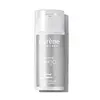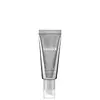What's inside
What's inside
 Key Ingredients
Key Ingredients

 Benefits
Benefits

 Concerns
Concerns

 Ingredients Side-by-side
Ingredients Side-by-side

Water
Skin ConditioningCaprylic/Capric Triglyceride
MaskingDipropylheptyl Carbonate
EmollientGlycerin
HumectantGlyceryl Stearate
EmollientCetearyl Alcohol
EmollientPhospholipids
Skin ConditioningNiacinamide
SmoothingAscorbic Acid
Antioxidant3-O-Ethyl Ascorbic Acid
Skin ConditioningSodium Hyaluronate
HumectantSodium Polyacrylate
AbsorbentRetinal
Skin ConditioningPhenoxyethanol
PreservativeSqualane
EmollientPalmitoyl Tripeptide-1
Skin ConditioningPalmitoyl Tetrapeptide-7
Skin ConditioningButylene Glycol
HumectantCarbomer
Emulsion StabilisingPolysorbate 20
EmulsifyingXanthan Gum
EmulsifyingEthylhexylglycerin
Skin ConditioningTocopherol
AntioxidantWater, Caprylic/Capric Triglyceride, Dipropylheptyl Carbonate, Glycerin, Glyceryl Stearate, Cetearyl Alcohol, Phospholipids, Niacinamide, Ascorbic Acid, 3-O-Ethyl Ascorbic Acid, Sodium Hyaluronate, Sodium Polyacrylate, Retinal, Phenoxyethanol, Squalane, Palmitoyl Tripeptide-1, Palmitoyl Tetrapeptide-7, Butylene Glycol, Carbomer, Polysorbate 20, Xanthan Gum, Ethylhexylglycerin, Tocopherol
Retinal 0.2%
Skin ConditioningHyaluronic Acid
HumectantCaprylic/Capric Triglyceride
MaskingGlycerin
HumectantIsododecane
EmollientCyclodextrin
AbsorbentCetearyl Alcohol
EmollientCetearyl Olivate
Sodium Acrylate/Sodium Acryloyldimethyl Taurate Copolymer
Emulsion StabilisingSorbitan Olivate
EmulsifyingTocopheryl Acetate
AntioxidantSqualane
EmollientSodium Hyaluronate
Humectant3-O-Ethyl Ascorbic Acid
Skin ConditioningDaucus Carota Sativa Seed Oil
EmollientHydroxyethyl Acrylate/Sodium Acryloyldimethyl Taurate Copolymer
Emulsion StabilisingEthylhexylglycerin
Skin ConditioningPentylene Glycol
Skin ConditioningVanilla Planifolia Fruit Extract
Skin ConditioningHydroxypropyl Methylcellulose
Emulsion StabilisingRubus Chamaemorus Seed Oil
Skin ConditioningSodium Polyaspartate
HumectantTetrahexyldecyl Ascorbate
AntioxidantDipteryx Odorata Bean Extract
MaskingBHT
AntioxidantPolyhydroxystearic Acid
EmulsifyingDisodium EDTA
Hydroxyacetophenone
AntioxidantTitanium Dioxide
Cosmetic ColorantPhenoxyethanol
PreservativeAlumina
AbrasiveLonicera Caprifolium Flower Extract
PerfumingIsostearic Acid
CleansingLecithin
EmollientLonicera Japonica Flower Extract
Skin ConditioningPolyglyceryl-3 Polyricinoleate
EmulsifyingStearic Acid
CleansingCoumarin
PerfumingCI 14700
Cosmetic ColorantRetinal 0.2%, Hyaluronic Acid, Caprylic/Capric Triglyceride, Glycerin, Isododecane, Cyclodextrin, Cetearyl Alcohol, Cetearyl Olivate, Sodium Acrylate/Sodium Acryloyldimethyl Taurate Copolymer, Sorbitan Olivate, Tocopheryl Acetate, Squalane, Sodium Hyaluronate, 3-O-Ethyl Ascorbic Acid, Daucus Carota Sativa Seed Oil, Hydroxyethyl Acrylate/Sodium Acryloyldimethyl Taurate Copolymer, Ethylhexylglycerin, Pentylene Glycol, Vanilla Planifolia Fruit Extract, Hydroxypropyl Methylcellulose, Rubus Chamaemorus Seed Oil, Sodium Polyaspartate, Tetrahexyldecyl Ascorbate, Dipteryx Odorata Bean Extract, BHT, Polyhydroxystearic Acid, Disodium EDTA, Hydroxyacetophenone, Titanium Dioxide, Phenoxyethanol, Alumina, Lonicera Caprifolium Flower Extract, Isostearic Acid, Lecithin, Lonicera Japonica Flower Extract, Polyglyceryl-3 Polyricinoleate, Stearic Acid, Coumarin, CI 14700
Ingredients Explained
These ingredients are found in both products.
Ingredients higher up in an ingredient list are typically present in a larger amount.
You might know this ingredient as Ethyl Ascorbic Acid, a more stable version of ascorbic acid.
Like other types of vitamin C, this ingredient has many benefits including reducing wrinkles, skin soothing, dark spot fading, and fighting against free radicals.
3-O-Ethyl Ascorbic Acid interferes with the process of skin darkening, helping to reduce hyperpigmentation. It also encourages the skin to produce more collagen.
Once applied, 3-O-Ethyl Ascorbic Acid is converted to Vitamin C deeper in the skin's layers. This process is slow but makes this ingredient more tolerable for skin.
The optimum pH range for this ingredient is 4 - 5.5
Learn more about 3-O-Ethyl Ascorbic AcidThis ingredient is an emollient, solvent, and texture enhancer. It is considered a skin-softener by helping the skin prevent moisture loss.
It helps thicken a product's formula and makes it easier to spread by dissolving clumping compounds.
Caprylic Triglyceride is made by combining glycerin with coconut oil, forming a clear liquid.
While there is an assumption Caprylic Triglyceride can clog pores due to it being derived from coconut oil, there is no research supporting this.
Learn more about Caprylic/Capric TriglycerideCetearyl alcohol is a mixture of two fatty alcohols: cetyl alcohol and stearyl alcohol. It is mainly used as an emulsifier. Emulsifiers help prevent the separation of oils and products. Due to its composition, it can also be used to thicken a product or help create foam.
Cetearyl alcohol is an emollient. Emollients help soothe and hydrate the skin by trapping moisture.
Studies show Cetearyl alcohol is non-toxic and non-irritating. The FDA allows products labeled "alcohol-free" to have fatty alcohols.
This ingredient is usually derived from plant oils such as palm, vegetable, or coconut oils. There is debate on whether this ingredient will cause acne.
Due to the fatty acid base, this ingredient may not be Malassezia folliculitis safe.
Learn more about Cetearyl AlcoholEthylhexylglycerin (we can't pronounce this either) is commonly used as a preservative and skin softener. It is derived from glyceryl.
You might see Ethylhexylglycerin often paired with other preservatives such as phenoxyethanol. Ethylhexylglycerin has been found to increase the effectiveness of these other preservatives.
Glycerin is already naturally found in your skin. It helps moisturize and protect your skin.
A study from 2016 found glycerin to be more effective as a humectant than AHAs and hyaluronic acid.
As a humectant, it helps the skin stay hydrated by pulling moisture to your skin. The low molecular weight of glycerin allows it to pull moisture into the deeper layers of your skin.
Hydrated skin improves your skin barrier; Your skin barrier helps protect against irritants and bacteria.
Glycerin has also been found to have antimicrobial and antiviral properties. Due to these properties, glycerin is often used in wound and burn treatments.
In cosmetics, glycerin is usually derived from plants such as soybean or palm. However, it can also be sourced from animals, such as tallow or animal fat.
This ingredient is organic, colorless, odorless, and non-toxic.
Glycerin is the name for this ingredient in American English. British English uses Glycerol/Glycerine.
Learn more about GlycerinPhenoxyethanol is a preservative that has germicide, antimicrobial, and aromatic properties. Studies show that phenoxyethanol can prevent microbial growth. By itself, it has a scent that is similar to that of a rose.
It's often used in formulations along with Caprylyl Glycol to preserve the shelf life of products.
Retinal is a form of retinoid. Retinoids are the gold-standard class of anti-aging ingredients.
Retinal has many benefits as other retinoids: improve skin texture, reduce large pores, reduce the effects of aging, reduce the visibility of dark spots, heal scars, and fight acne.
Studies show retinal may work at a faster rate than retinol due to its structure.
All retinoids have to be converted into retinoic acid before starting to work. Some retinoids take several steps of conversion before binding. Retinal is only one step away, making it more potent.
Like other retinoids, retinal may be irritating. It is best to ease into using this ingredient frequently.
Using the 'ramp up' method, start by using retinol once a week. This gives your skin time to adjust and decrease irritation. Once you feel ready, you can slowly increase the frequency of retinol use.
Using retinoids will increase sun-sensitivity in the first few weeks of use. Though studies show retinoids increase your skin's natural SPF with continuous use, it is best to always wear sunscreen and sun-protection.
Learn more about RetinalSodium Hyaluronate is hyaluronic acid's salt form. It is commonly derived from the sodium salt of hyaluronic acid.
Like hyaluronic acid, it is great at holding water and acts as a humectant. This makes it a great skin hydrating ingredient.
Sodium Hyaluronate is naturally occurring in our bodies and is mostly found in eye fluid and joints.
These are some other common types of Hyaluronic Acid:
Learn more about Sodium HyaluronateSqualane is an emollient that helps the skin hold onto moisture. It's an oily liquid that occurs naturally in certain types of fish and plant oils.
Because squalane boosts hydration in the skin, it also comes with plenty of benefits: it is an antioxidant and can help fight free radicals and skin damage. Squalane is also found to have a detoxifying effect when applied.
Squalane comes from squalene, which occurs naturally within the sebum of our skin. It is one of the oils our skin produces to keep itself hydrated. Squalane is the hydrogenated version of squalene and has a longer shelf life.
Research shows that squalane is non-irritating (even at 100% concentration).
In general, it's a fantastic ingredient. It does a great job at hydrating the skin, and it's suitable for those with sensitive skin.
The source of squalane may impact malassezia / fungal acne. This is because olive oil derived squalane can contain impurities such as fatty acids and plant waxes. Sugarcane derived squalane is recommended for anyone with malassezia concerns.
Is squalane vegan?
This depends on the source. Squalane can be derived from both plants and animals. Most squalane used in skincare comes from plants.
Please note: the source of squalane is only known if disclosed by the brand. We recommend reaching out to the brand if you have any questions about their squalane.
Read more about squalene with an "e".
Is squalane an oil?
Squalane is often called an oil, but it’s technically not; it’s a hydrocarbon, meaning it’s only made of carbon and hydrogen, unlike true oils which are triglycerides made of fatty acids and glycerol.
The term “oil-free” isn’t regulated, so companies can define it however they want. Some exclude all oils, while others just avoid mineral oil or comedogenic oils.
While some people avoid oils thinking they cause breakouts, the right kind of oil (or oil-like ingredient like squalane) can actually help balance and hydrate your skin. It’s worth testing out simple oils or squalane to see what works best for your skin.
Learn more about Squalane